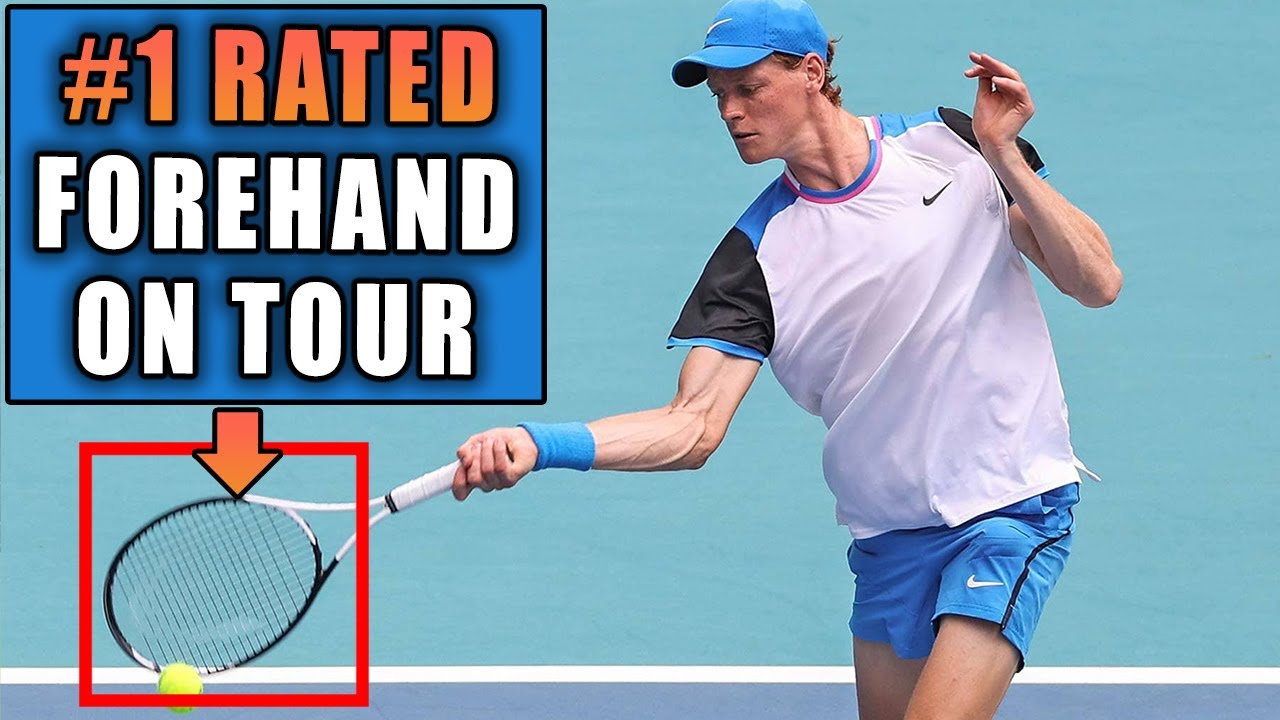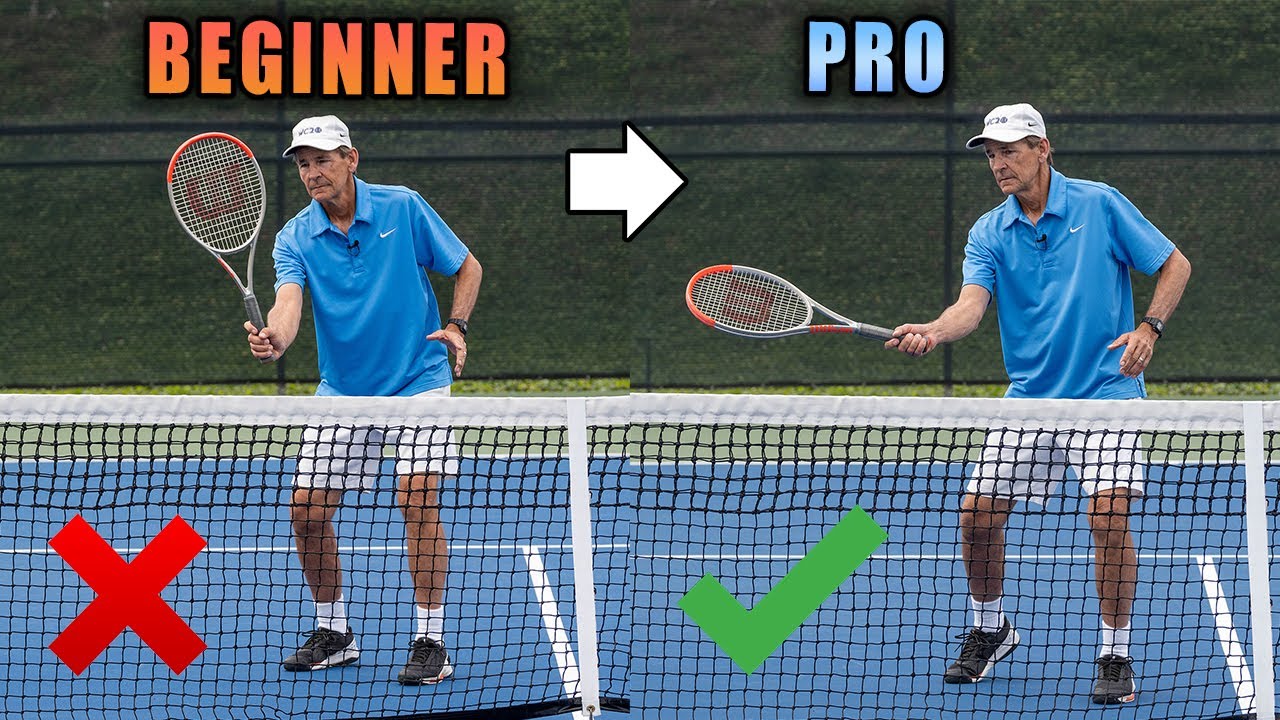On Court with USPTA: Improved Forehand Technique with Rick Macci
Summary
TLDRIn this tennis instructional video, coach Rick Macy demonstrates his methodology to master professional player forehand technique. He analyzes common problems like taking the racket too far back, advocates for reducing range of motion while increasing speed, and provides a step-by-step breakdown. Macy emphasizes proper elbow positioning, tapping an imaginary dog to get the correct wrist angle, driving forward with the hips to let the racket flip into the slot, and rolling the forearm for topspin. He aims to efficiently create maximum racket head speed for power.
Takeaways
- 😀 The forehand swing needs to evolve to adapt to the faster pace of modern tennis
- 👌 Studying pro players' strokes with 3D and MRI technology informs teaching methodology
- ✂️ The key is reducing range of motion while increasing racket speed
- 🤸♂️ Having the elbow elevated sets proper joint angles for efficient stroke mechanics
- 🐕 Tap an imaginary dog on the head to get proper elbow extension and racket positioning
- 🚀 Driving with the legs and hips makes the racket flip into the slot for maximum racket head speed
- 🎯 Elbow passing by the trunk enables hitting through the ball in a straight line for consistency
- 🔁 Rolling the forearm after contact induces topspin
- ⚡️ It's all about producing maximum racket head speed efficiently
- 🧠 Even if you don't master it, trying this technique can still improve your current strokes
Q & A
What is the main goal when hitting the forehand as outlined in the video?
-The main goal is to reduce the range of motion on the backswing and replace it with faster, more efficient muscle mechanics to increase racket head speed.
What should the elbow position be when taking the racket back?
-The elbow should be elevated and away from the body, with the forearm parallel to the ground.
What is the importance of 'elbow extension' in the forehand technique?
-Elbow extension helps set the proper joint angles so the stroke is more efficient. It leads to increased racket head speed and power.
What is meant by 'tapping the dog' in reference to the forehand?
-This is a teaching cue to get the player to achieve elbow extension with the palm down and racket head externally rotated, as if tapping a dog on the head.
How does the 'flipping' action of the racket occur?
-It occurs naturally when the elbow is extended and the legs/hips drive forwards causing the racket drop down and flip back into the slot.
Why is it important for the elbow to pass by the body on the forward swing?
-This allows for maximal racket head speed and facilitates applying topspin to the ball.
What is the benefit of reducing the backswing motion?
-It speeds up the stroke for better timing while still allowing complete energy transfer for power.
How can you create topspin on the forehand finish?
-Use a rolling motion of the forearm and turn the wrist over as if turning a doorknob.
What is the kinetic chain referenced in the video?
-This refers to the sequence of momentum transfer from the legs to hips to trunk to arm that allows for optimum stroke power.
What is the main focus when changing a forehand technique?
-The main focus is on the stroke mechanics - adjusting motions like the elbow position rather than footwork or strategy.
Outlines

This section is available to paid users only. Please upgrade to access this part.
Upgrade NowMindmap

This section is available to paid users only. Please upgrade to access this part.
Upgrade NowKeywords

This section is available to paid users only. Please upgrade to access this part.
Upgrade NowHighlights

This section is available to paid users only. Please upgrade to access this part.
Upgrade NowTranscripts

This section is available to paid users only. Please upgrade to access this part.
Upgrade NowBrowse More Related Video

How To HOLD / GRIP a Bat / Racket / Paddle | Table Tennis / Ping Pong | Beginner Tips & Tutorial

Craziest forehand I’ve EVER seen (big mistake)

Hammer your opponent's backhand with heavy balls!

Jannik Sinner Forehand Analysis- Footwork, Technique, Swing Path And MORE!

Professional Volley Technique Explained | Volley Tennis Lesson

I made a huge breakthrough on my forehand!
5.0 / 5 (0 votes)